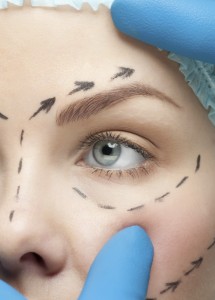
AESTHETIC NEWS

What constitutes the perfect face? While a glowing complexion and flawless skin play a role, there are actually mathematical ratios that dictate our facial beauty ideal. Certain proportions and facial feature arrangements enhance physical attractiveness, while others detract. There’s a scientific reason why plump lips, petite noses and large eyes are found particularly appealing in the female sex. Likewise, we are more apt to find symmetrical faces more beautiful compared to those with noticeable imbalance.
If you feel like you fall short of the Golden Ratio, rhinoplasty or other procedures may be appealing to you. Our pursuit to define facial beauty dates back to the ancient Greeks, who believed that beauty was defined by a Golden Ratio, also known as the Divine Proportion, or “phi.” The Greeks discovered that 1:1.618 was the ideal proportion of two parts of any object, whether a flower petal, a nautilus seashell or the human face. According to this formula, a beautiful person’s face is roughly one and a half times longer than it is wide.
The Golden Ratio maps out the optimal distances between the eyes, the length of the chin and the position and length of the mouth and nose. Some even speculate that Da Vinci used the Divine Proportion when painting his Mona Lisa masterpiece.
Fast forward thousands of years and researchers continue to investigate how the Golden Ratio affects our perception of ideal facial proportions and sex appeal. According to emerging research from the University of Toronto and the University of California, women were deemed more attractive when the vertical distance between the mouth and eyes was roughly one-third of the face’s length.
Additional examples of optimal facial proportions per the Golden Ratio:
Stars like Angelina Jolie, Natalie Portman and Amber Heard boast “near perfect” Golden Ratio scores for eye spacing and perfect lip and nose dimensions. But why is it that we are drawn to this secret formula for beauty? Researchers from the Chinese Academy of Sciences postulate that we are biologically hard-wired to look for signs of youthfulness and fertility. As we get older, the width of our noses and mouths tends to increase, and we subconsciously note these incremental indicators of aging.
Today, many cosmetic surgeons use the Golden Ratio or “Phi Mask” as a clinical benchmark to determine ideal facial proportions in patients. By taking precise measurements during facial analysis, a plastic surgeon can pinpoint key relationships and distances between the eyes, nose, lips, chin and jawline.
At the Manhattan plastic surgery office of Dr. Thomas Loeb, dermal fillers may be used to add projection and width to the cheekbones or fullness to the lips, and Botox to raise the eyebrows to a more youthful level. Additionally, natural rhinoplasty can improve the proportions of the nose, bringing balance and harmony to the face.
For an in-depth consultation with a world-renowned plastic surgeon NYC, we invite you to contact Dr. Loeb’s practice today for a rhinoplasty NYC consultation.